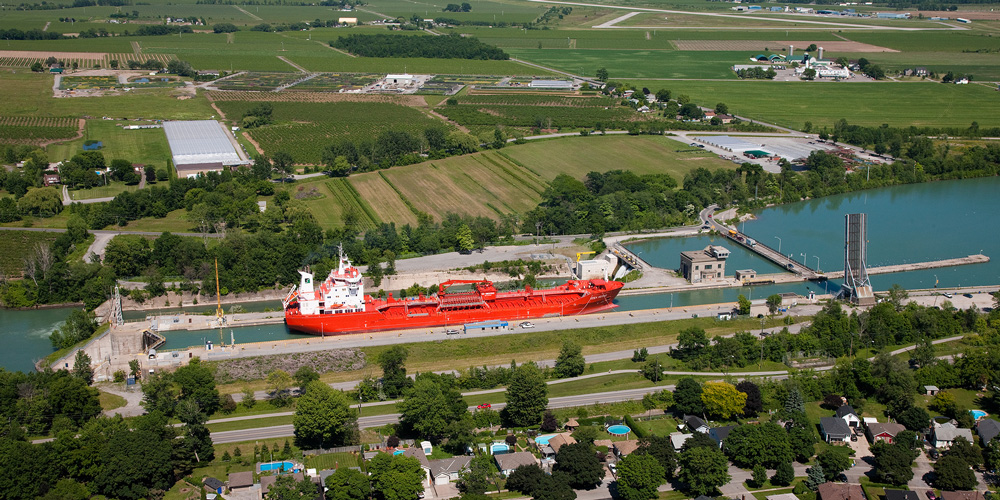St. Lawrence Seaway Closes Another Successful Navigation Season
December 27, 2002
Cornwall, December 27, 2002 – The St. Lawrence Seaway officially closed for the season on December 26, 2002, with the passage of the downbound ship, CSL Laurentien, through the St. Lambert Lock near Montreal, Quebec, at 20:29 hours. The Seaway opened its 44th shipping season on March 26 and remained open for 276 days in 2002.
Estimated combined cargo passing through the Welland Canal and the Montreal/Lake Ontario sections of the system was approximately 41,117,000 metric tonnes, 1.4 percent lower than in 2001. Iron ore took first place this year among commodity shipments, with cargoes amounting to 9.6 million metric tonnes – up 11.4%. Grain continued its downward trend by 12.8%. Other commodities associated with the steel industry and other bulk cargo, declined by approximately 5%.
Estimated cargo traffic was 31,875,000 tonnes on the Welland Canal (2.2% less than last year), while traffic on the Montreal/Lake Ontario section was 29,845,000 tonnes, 1.4% less than in 2001. Vessel transits amounted to 3,865 over the entire Seaway.
“This year’s 276-day long season set no records for tonnage; still, 2002 displayed excellent binational cooperation on a number of issues of long-term, critical significance to the entire Great Lakes/St. Lawrence Seaway System,” said Guy Véronneau, President of The St. Lawrence Seaway Management Corporation. “The highlight was the introduction of the Automatic Vessel Identification System (AIS), which will contribute greatly to the safety, security and efficiency of traffic.” AIS will be mandatory in the new season for commercial vessels plying Seaway waters from Montreal to Long Point, on Lake Erie.
Mr. Véronneau also commented on the Seaway’s ongoing modernization program, which will receive welcome direction from a major binational research project to hopefully commence next year. “The Canadian government is considering participation in the 5-year feasibility phase of the comprehensive Great Lakes Navigation Feasibility Study,” he said. “This study would investigate the cost of maintaining the existing structures for the next 50 years, as well as the economic, social and environmental effects of large- and small-scale capital improvements to the entire system, and ecosystem restoration opportunities. The study would also provide realistic information for enlightened decisions on where and how investments should be made. We believe Canada’s participation would be a wise move.”
In addition, Mr. Véronneau noted progress with the automation of locks and bridges, and mentioned that the Seaway’s binational Web site is thriving. “It is now attracting some 80,000 page requests a month from users in search of the most complete navigation information available. We successfully launched some useful new e-business features this year, which are proving popular with Seaway customers.”
The St. Lawrence Seaway System closes during the winter to make way for a substantial maintenance program on its 13 locks and connecting channels. Next year’s Seaway navigation season will begin March 25, 2003.
The Port of Montreal remains open during the winter months to accommodate traffic on the St. Lawrence River.






